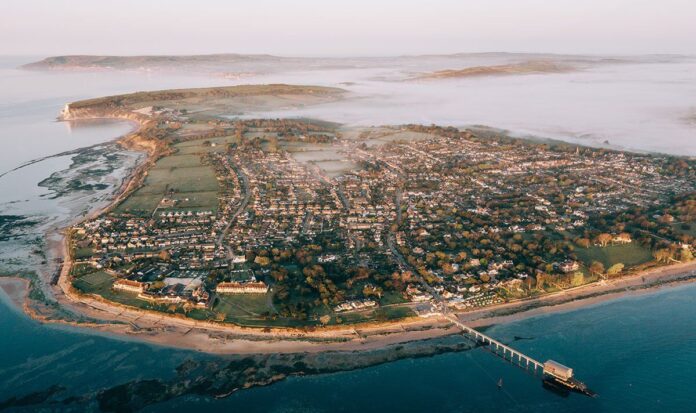The Isle of Wight is a stunning slice of the UK, a designated UNESCO Biosphere Reserve and an Area of Outstanding Natural Beauty. It is, as such, a holiday destination favourite for many Britons. Historically a part of Hampshire in Southern England, today the island sits just off the coast of the mainland , only the Solent separating it from nearby Portsmouth and Southampton. In recent decades the island has become famous for its ‘Isle of Wight Festival’, but there’s more to this place than overpriced beer and blasting music. Millions of years ago, the Isle of Wight was home to an extremely high concentration of dinosaurs. A view of a rapeseed field on the Isle of Wight; it is a designated UNESCO Biosphere Reserve (Image: GETTY) Its rich history of giant creatures has made it one of Europe’s biggest hotspots for dinosaur cliffs and quarries . The island’s eroding cliffs often reveal ancient and hidden remains, especially along the Back of the Wight, an area isolated by the chalk hills immediately to the north. Over 125 million years ago, the Isle of Wight was swarming with dinosaurs. Many fossilised remains have been found scattered across the landmass, including the neck bone of a Sauropod which, in its day, measured more than 20 metres long and 80,000kg in weight. The island was also home to Europe’s deadliest predator, a giant saw-toothed Neovenator. Coastal erosion along the likes of Compton Bay has exposed dozens of fossilised prints (Image: GETTY) First discovered in 1978, the Neovenator would have been eight metres in length, a mouth filled with razor-sharp teeth, as well as five-inch long killer claws. More than 100 species of dinosaurs have been found across the British Isles, but nowhere beats the number of those unearthed on the Isle of Wight. The condition of these remains is also unmatched, with bones and even fossilised footprints clearly visible on exposed rocks around the island’s beaches. Visitors often flock to Yaverland and Compton Bay to catch a glimpse of the fossils from the strata of the Wessex Formation. One of the many dinosaur skeletons on display at the Dinosaur Isle Museum (Image: GETTY) Reflecting its rich dino history, the island has been nicknamed ‘Dinosaur Island’, and the Dinosaur Isle Museum , the island’s top dinosaur exhibit, was established in 2001. Palaeontologists regularly find new species of dinosaurs on the island, including just this month. A collaborative team of researchers from the University of Portsmouth and the University of Bath working on the Isle of Wight discovered a new species of small plant-eating dinosaur, named Vectidromeus insularis. It marked another addition and second find from the hypsilophodont family on the island, suggesting that Europe had its own family of small herbivorous dinosaurs separate from those found in Asia and North America.
The beautiful UK island that was once absolutely swarming in dinosaurs
Sourceexpress.co.uk
RELATED ARTICLES


